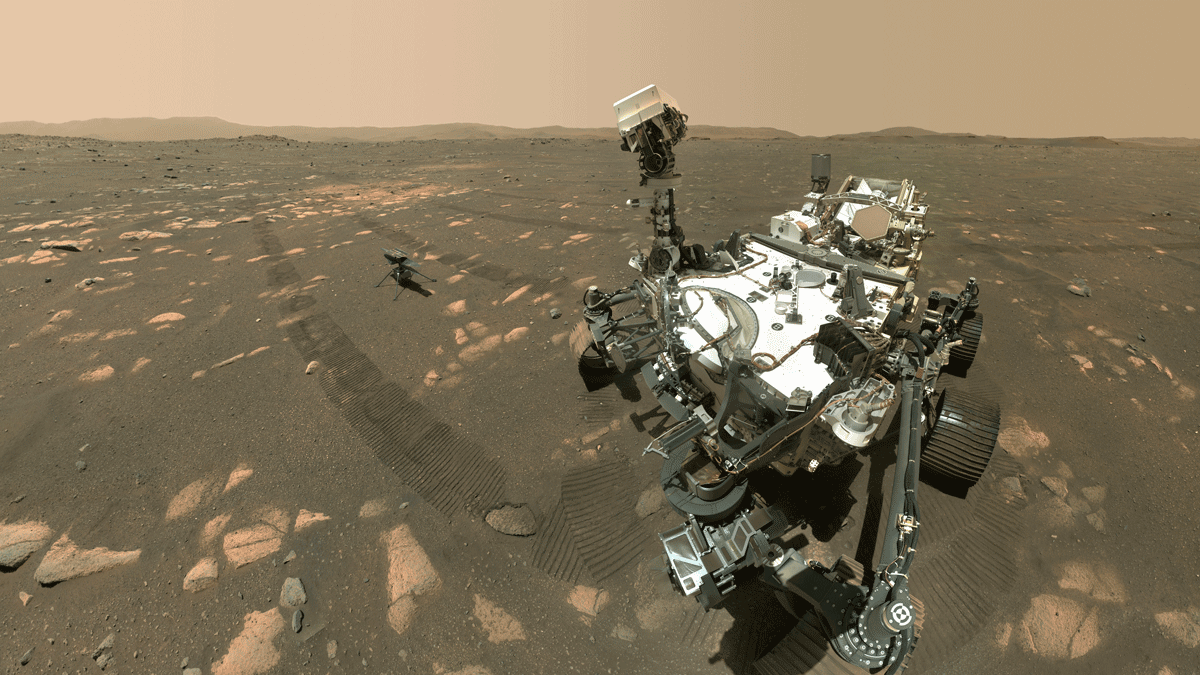NASA has teamed up with Japan’s Tohoku University to test whether its next-generation Mars helicopter, also known as Mars Science Helicopter (MSH), can take flight in the red planet’s fragile atmosphere, reported Nikkei Asia.
China ‘Strikes Back’! Days After US Missile Test, Beijing Conducts Its Own Anti-Ballistic Missile (ABM) Test
The blades of the new Mars copter will be tested in a wind tunnel at Tohoku University. The wind tunnel can create atmospheric conditions similar to Mars.
The atmosphere on Mars is over 100 times thinner than Earth, and the red planet has approximately one-third of Earth’s gravity, meaning an aircraft on Mars is required to generate around 33 times the lift needed to fly on Earth.
The university will work with NASA to check if the blades for the next-generation helicopter can generate enough lift when subjected to winds at a hundredth of Earth’s standard air pressure.

It will be the first test of a NASA-developed item at the Tohoku University wind tunnel. The two sides entered a joint research agreement last year and have been working together on designing the shape of a rotor for initial tests expected to take place later this year and continue into 2023.
The MSH is a successor to NASA’s Ingenuity helicopter that landed on Mars in February 2021, following which it took to the Martian skies in April, becoming the first aircraft to make a powered, controlled flight on another planet.
Ingenuity Helicopter Performs Way Beyond NASA’s Expectations
Built by NASA’s Jet Propulsion Lab (JPL), Ingenuity is a coaxial helicopter with a mass of 1.8 kilograms and a rotor diameter of 1.21 meters. The aircraft relies on solar cells and a battery system for power, allowing up to 90-second flight endurance.
Ingenuity’s flights are conducted fully autonomously because of the communication delay between Earth and Mars. ‘Pilots’ at JPL plan the flights and send commands to the Perseverance Mars rover, which then relays those commands to the helicopter.

During the flight, the sensors on board, including the navigation camera, an inertial measurement unit, and a laser range finder, provide real-time data to Ingenuity’s navigation processor and main flight computer, which guide the helicopter in flight. It enables Ingenuity to react to the landscape while carrying out its commands.
Ingenuity’s original mission was to demonstrate the capability to fly a helicopter in the thin atmosphere of Mars. Still, following its three successful flights, NASA decided to assign it a new mission.
After two more flights, NASA shifted Ingenuity from ‘technology demonstration’ to the new ‘operations demonstration’ phase to explore how aerial scouting and other functions could benefit future exploration of Mars and other worlds. The helicopter would undertake more precision maneuvers and risks and use its aerial-observation capabilities.
The Ingenuity has conducted 29 flights, the last of which occurred on June 14, where it was airborne for 66.6 seconds and traveled at a speed of 5.5 m/s, covering a distance of 179 meters.
However, the extreme temperature conditions on the red planet are taking a toll on Ingenuity which was initially built for just five flights during the summer season but has performed way beyond NASA’s expectation and survived till the winter.
The helicopter performed its last flight with a dead navigation sensor that suffered a malfunction about a week ago, according to its handlers at JPL.
“Over the past several sols (Martian solar days) on Mars, the Ingenuity team has been busy recommissioning the helicopter for flight, going through a series of activities that include preflight checkout of sensors and actuators and a high-speed spin of the rotor,” the JPL mission team said in a report.
“These activities have revealed that one of the helicopter’s navigation sensors, called the inclinometer, has stopped functioning,” the report added.
Mars Science Helicopter Will Be More Capable
Ingenuity’s successor will be a more capable helicopter that can perform longer supplies and carry more payloads. Also, unlike Ingenuity which can only fly over flat or rock-free terrain, the MSH will be capable of all-terrain flight.

According to NASA’s white paper on MSH, the new helicopter could be a hexacopter with a mass of about 31 kilograms and a payload of 2-5 kilograms capable of carrying scientific instruments for mapping, stratigraphy, remote sensing, etc. The current Ingenuity helicopter does not have a dedicated science payload apart from the tools required for flight.
Six rotors will lift the helicopter, each with a quartet of 0.64m blades, flying at a top speed of about 30 meters per second for a range of up to 10 kilometers per flight.
The advent of planetary aerial vehicles marks a new age of exploration, traditionally conducted using landers, rovers, and satellites. The new-age aircraft can cover a more extensive range of terrain in less time than legacy landers and rovers and offer more near-surface capability than orbiters.
- Contact the author at tanmaykadam700@gmail.com
- Follow EurAsian Times on Google News




